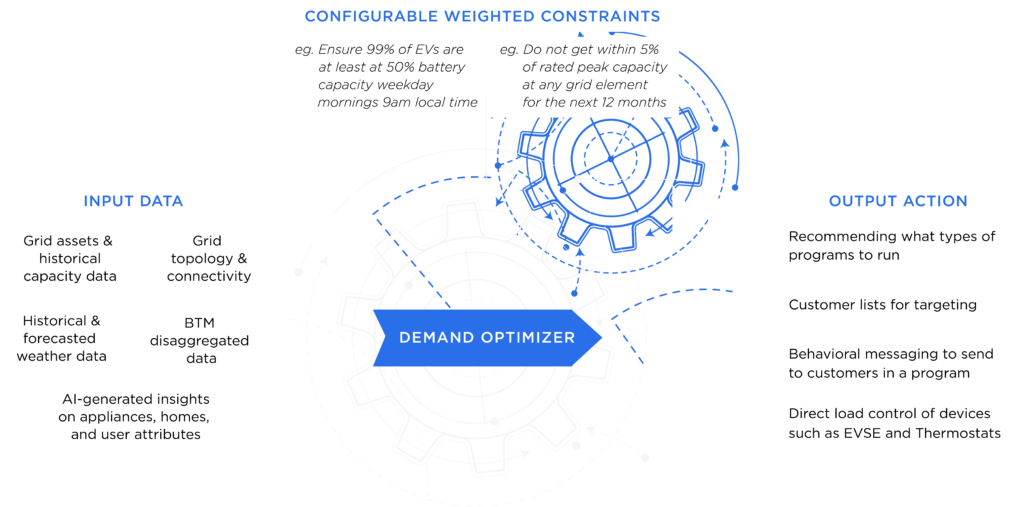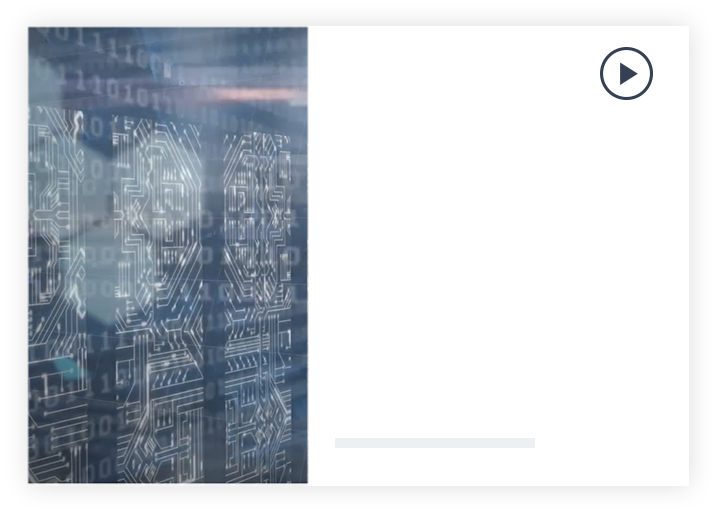Bidgely is Disaggregation
We did it first - and we do it best.
We are the pioneers of Behind The Meter load disaggregation technology, also known as Non Intrusive Load Monitoring. We analyze meter data (real time, AMI and non AMI) and identify appliance signatures using advanced AI/machine learning models and accurately identify what is happening behind the meter in hourly usage of various appliances.
100%
Built-in
16
Patents
Zero
Sensors
ToU
Granularity
Electricity, Gas, Water
Market Leaders in Disaggregation
Bidgely has been actively developing and delivering disaggregation technology for more than 12 years, earning 16 patents in the process. We were the first company to take disaggregation to the market at any kind of scale. Back then, disaggregation was often dismissed by the competition. Today, however, the industry recognizes its value and disaggregation is no longer a novelty; it's a core requirement, prominently featured in many RFPs.
Every Appliance Has a Fingerprint
Similar to Netflix and Google profiling their customers uniquely one at a time, we enable energy, gas and water utilities to accomplish the same level of personalized profiling.
Bidgely uses meter data to detect the presence and use of 12 different appliance loads in homes. Not just at a monthly or bill-level but at a sample-level. That means we are able to tell if an electric heater was running during each 15-minute interval of the day and how much energy it consumed during that interval.
The reason we are able to do this so well is because our technological journey began with 5-second energy consumption data. As we developed our first disaggregation capabilities with high-frequency sampled data, we collected valuable ground truth data and gathered unique experience understanding appliance fingerprints.
Play Video
Every Appliance Has a Fingerprint
Similar to Netflix and Google profiling their customers uniquely one at a time, we enable energy, gas and water utilities to accomplish the same level of personalized profiling.
Bidgely uses meter data to detect the presence and use of 12 different appliance loads in homes. Not just at a monthly or bill-level but at a sample-level. That means we are able to tell if an electric heater was running during each 15-minute interval of the day and how much energy it consumed during that interval.
The reason we are able to do this so well is because our technological journey began with 5-second energy consumption data. As we developed our first disaggregation capabilities with high-frequency sampled data, we collected valuable ground truth data and gathered unique experience understanding appliance fingerprints.
Accuracy
Bidgely provides the industry's most accurate disaggregation. We report disaggregation accuracy in terms of detection and estimation.
Our published numbers are based on metered ground truth from tens of thousands of homes and can be requested here.

15-min Load Footprints
Our algorithms process AMI data and are able to detect what appliances are running during each 15-minute interval and measure the kWh they consumed in that interval. As time-of-use applications become important, we can put this data in front of consumers and utilities alike for critical decision-making.
We can identify customers who can benefit the most from specific time-of-use rates because we know what shiftable loads they run during peak hours. We can help consumers by predicting exactly how much money they can save by shifting specific loads.
We can help utilities better forecast power needs across the grid by providing a better understanding of the behind-the-meter loads.
Real-time On-meter Disaggregation
Bidgely keeps pushing the envelope by enabling detection of large appliances such as EVs within minutes of it being plugged in. It works by installing a miniaturized version of our disaggregation application on the meter itself. This application analyzes high-frequency signals available only on the meter to produce appliance on-off detection events. Unlike AMI disaggregation these real-time events can have a proactive impact on applications such as load shifting.

Worldwide Portability
Different parts of the world have starkly different weather, homes, appliances, and human behavior patterns. It is important for disaggregation algorithms to factor these in and yet retain a high degree of performance. Our disaggregation is built on a strong foundation with an ability to be ported to any geography with little to no effort and has been battle-tested in every region across more than 15 countries.
Beyond Disaggregation
Our disaggregation technology has served as a launchpad for us to progress into capabilities far beyond just providing a breakdown of appliances.
Fuel Type Detection
Our HVAC disaggregation algorithms are now able to detect fuel type used by heating equipment even if we have access to only electricity consumption data.
Equipment Type
We can detect HVAC equipment types such as Heat pumps, Variable speed pool pumps using our sophisticated classification models.
Inefficiency Type
We are not only able to tell if a particular home is using heating inefficiently but also the type of their inefficiency - if it is building related, equipment related or behavior related. This can help furnish pinpoint recommendations to customers to maximize energy efficiency.
Theft Detection
Our AI algorithms leverage energy consumption patterns, current and voltage parameters, power factors and smart meter events to identify meter tampering, meter bypass and tariff misuse with a high probability thereby reducing revenue losses for utilities.
Patented Technology for Peace of Mind
Bidgely's disaggregation technology is protected by numerous patents, so utilities' implementations are safe from contention. The patented machine learning algorithms include those related to:
- Energy disaggregation techniques for ami/smart meter whole-house energy consumption data
- Solar energy disaggregation techniques for whole-house energy consumption data
- EV disaggregation techniques
- Anomaly detection and bill comparison from disaggregated energy data
- Low frequency / non-smart meter energy disaggregation techniques

Hyper Personalization Framework
Bidgely's unique Next Best Interaction (NBI) engine takes into account each customer's 100-point profile, context, weather data and the utility's objectives in order to select the best next interaction possible for every household.
Each NBI combines a personalized energy use insight and a recommended action pulled from a library of behavioral tips, education, programs and product offerings. This ensures that customers only see recommendations that are directly relevant to them, and are never shown recommendations upon which they can't act.
Demand Optimizer
Bidgely's Demand Optimizer is an AI-powered decision engine that helps optimize DERs on the grid. By reading input data (including grid assets, disaggregated consumption data, AI-identified attributes, and weather data), and then accounting for the constraint scenarios that you apply, the smart engine delivers best-outcome recommendations for programs, customer targeting, behavioral messaging, and direct device control.

Out of the Box Energy Big-Data Analytics
Bidgely’s solutions are all built on a modern technology stack, including BI tools and data lake, designed to ensure rapid time to value and agility. Because Bidgely offers out of the box energy Big-Data Analytics, utilities can avoid paying millions of dollars to multiple integrators and benefit from the best data science team in the industry.

Best-In Class Data Science Team Delivers Superior Science
Bidgely has more than 20 data scientists that have worked since 2011 to develop robust algorithms that last; the team regularly publishes research papers, files patents and reviews the latest techniques both in academic research and commercial markets.













